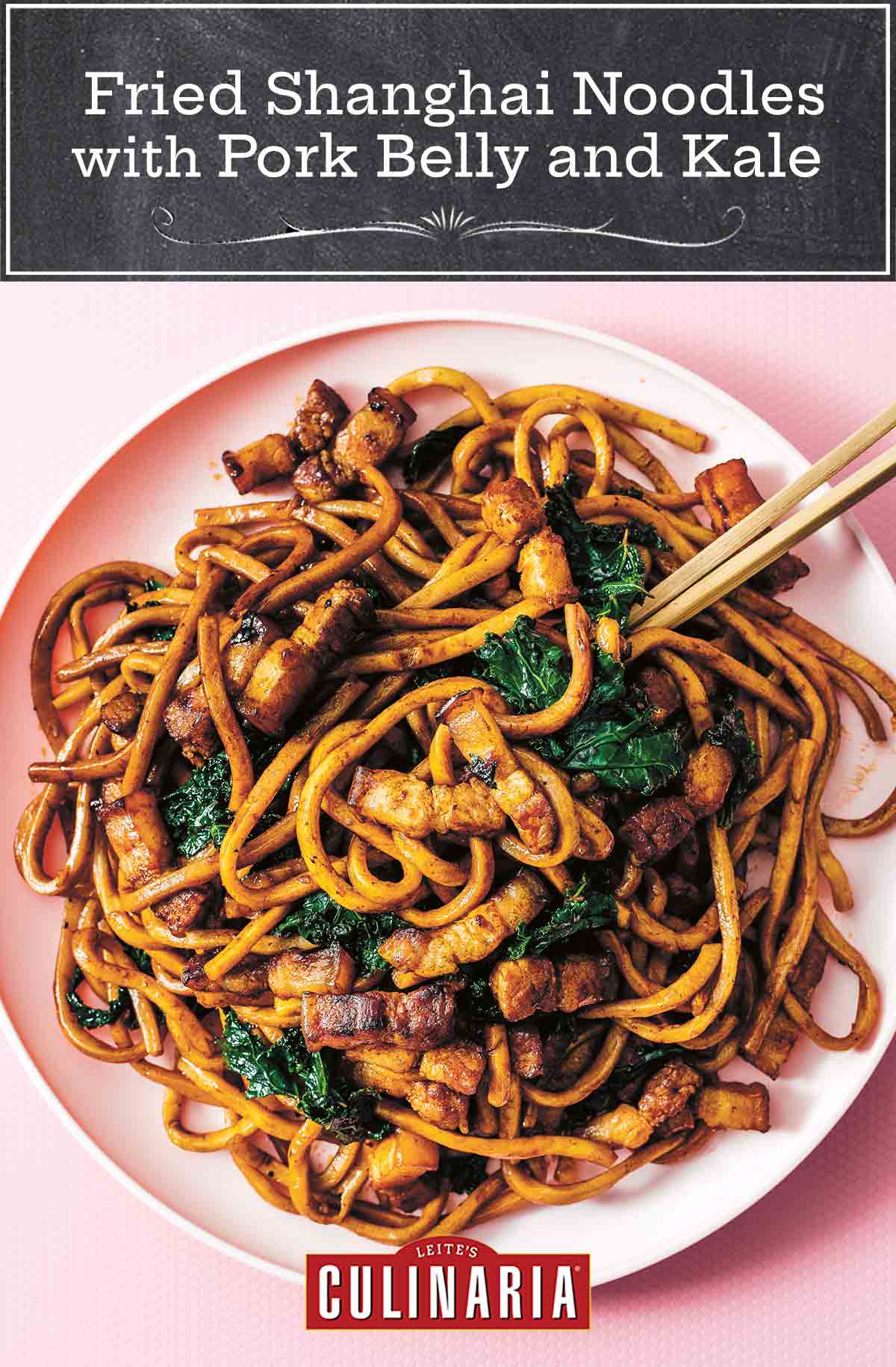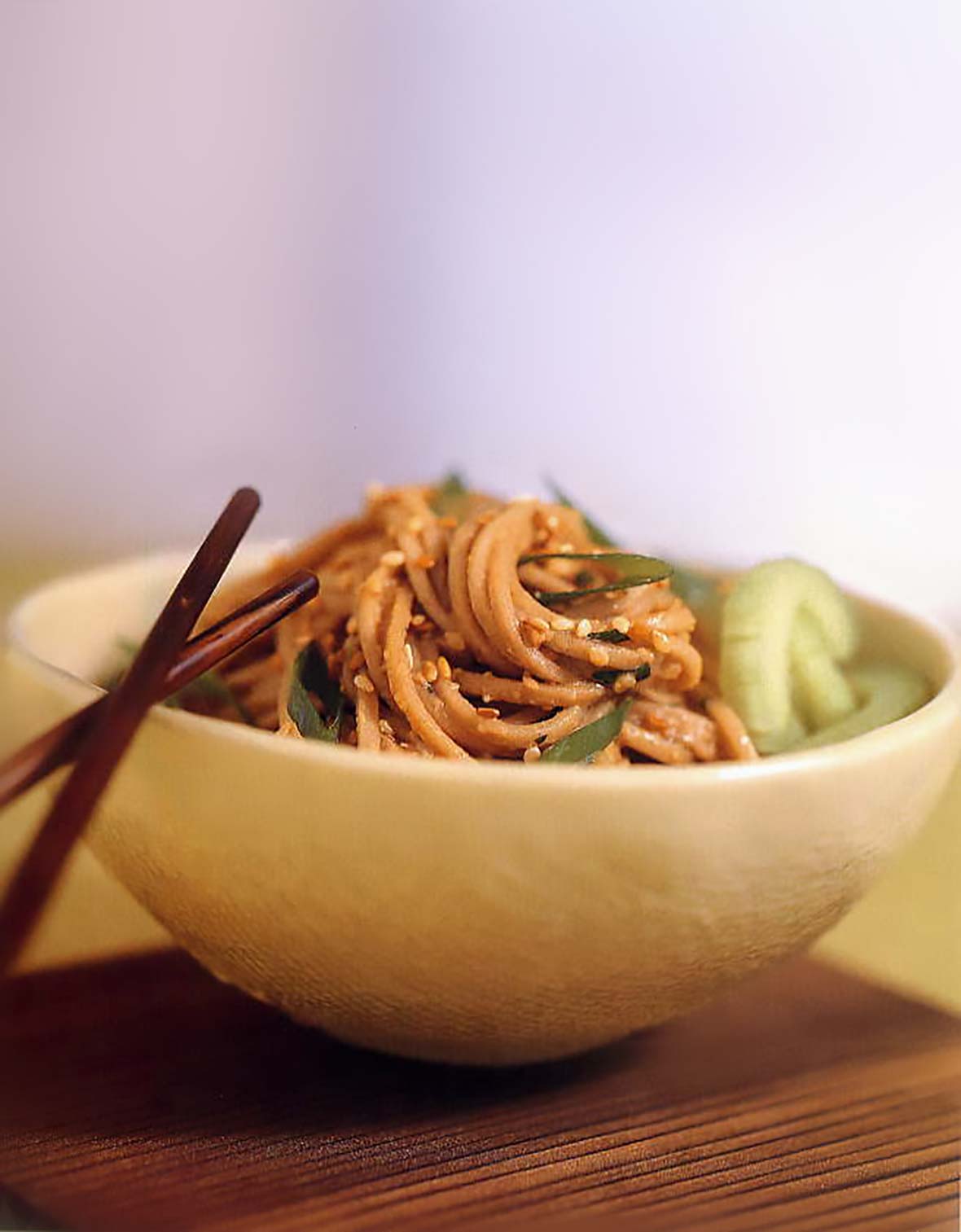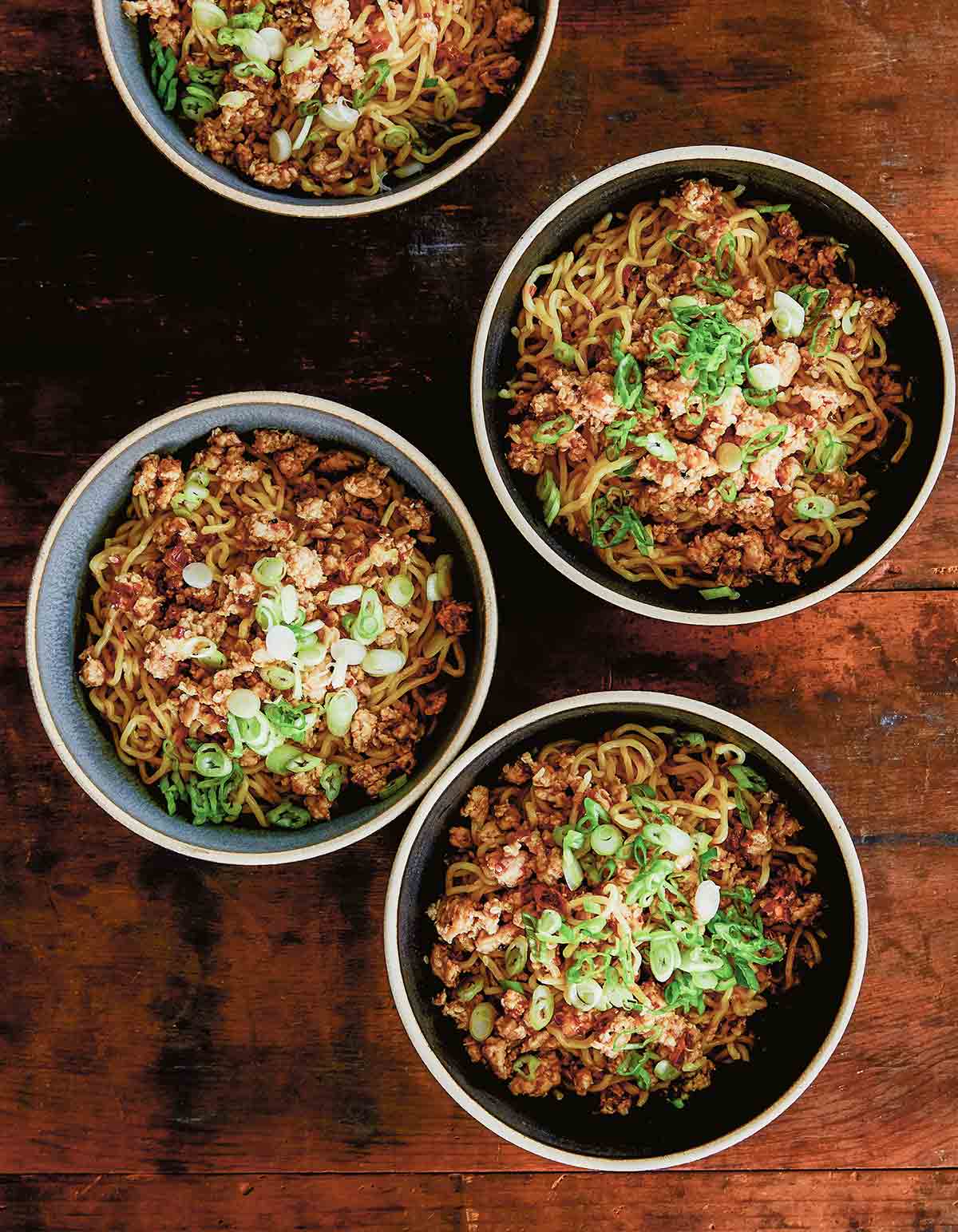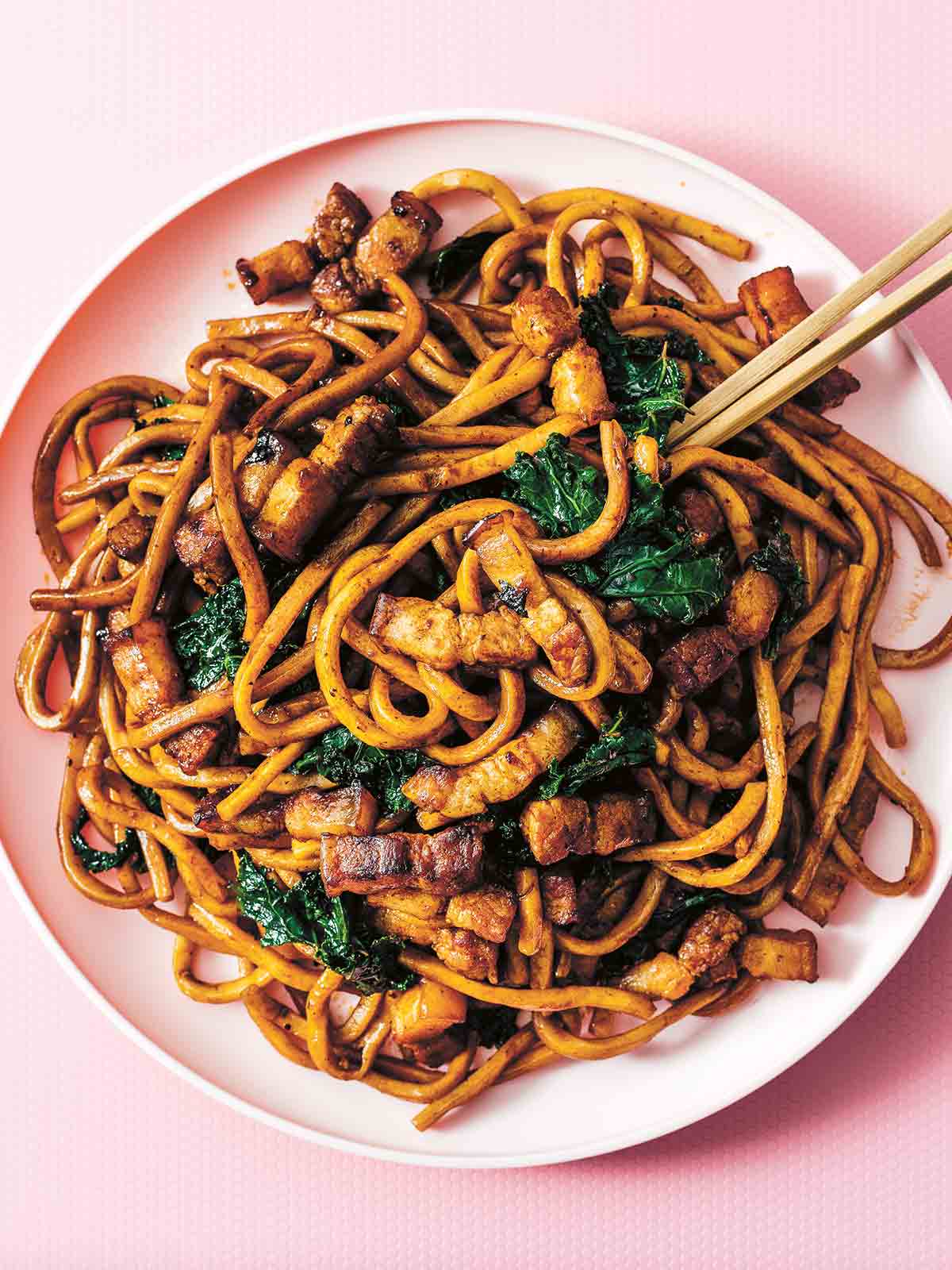
Why order in when you can stir-fry your own plateful of noodles in 20 minutes or less?
There are a few ways to ensure a quality plate: A quick cornstarch-Shaoxing wine marinade for the pork helps tenderize it and improve browning; a mix of dark and light soy sauce adds color and saltiness; and searing the noodles on high heat adds a wok-fried smokiness even if you don’t have a wok.
You can find Shanghai noodles in the fresh noodle section at your local Asian grocery store or grab a package of frozen udon (both come precooked).–Mike Le and Stephanie Le

Why Our Testers Loved This
There’s a whole bunch of reasons our recipe testers happily slurped up these noodles. They loved how quick and easy it was to make the dish and that it required only a handful of ingredients, making it perfect for a mid-week meal.
Rema S. summed it up best with her comment, “Who doesn’t love a bowl of squishy, saucy, chewy noodles?“
Notes on Ingredients
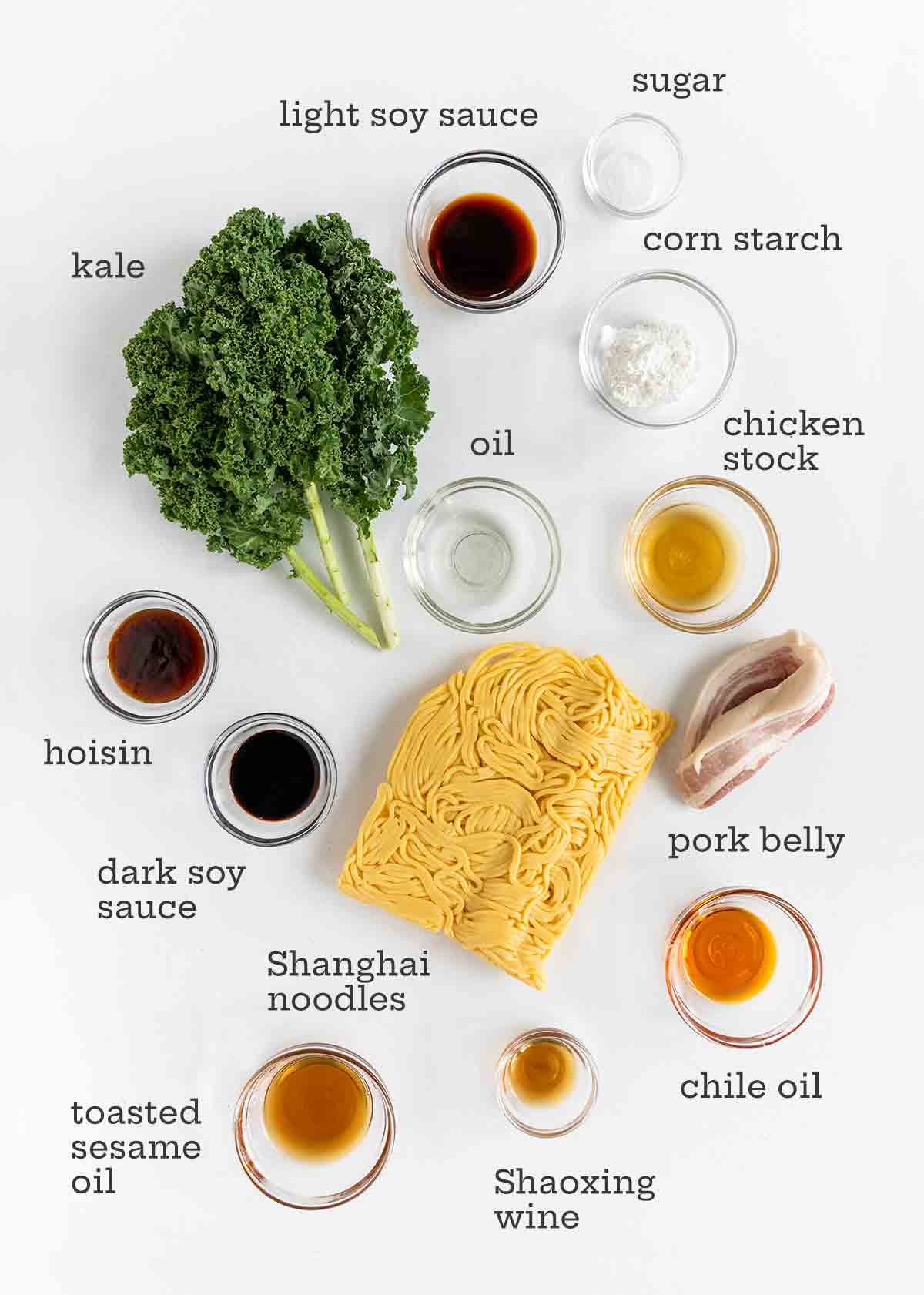
- Shaoxing wine–This is also known as Chinese rice wine. It’s available at Asian markets and many supermarkets. If it’s not available to you, substitute dry sherry.
- Pork belly–These crispy bites of pork add flavor and richness to the noodles. Don’t be tempted to trim the fat from the pork belly. It gets wonderfully crispy during its quick sear.
- Shanghai noodles–These fresh wheat noodles are available in the refrigerated section of Asian markets and large supermarkets. You can also substitute frozen udon noodles.
- Neutral oil–Your wok or skillet will be very hot, so be sure to use a high smoke-point oil, such as canola or peanut oil.
- Kale–The sturdy texture of kale stands up well to the high heat of the stir-fry, but you could substitute another sturdy green, like collards, or an Asian vegetable like gai lan (Chinese broccoli).
Step-by-Step Instructions
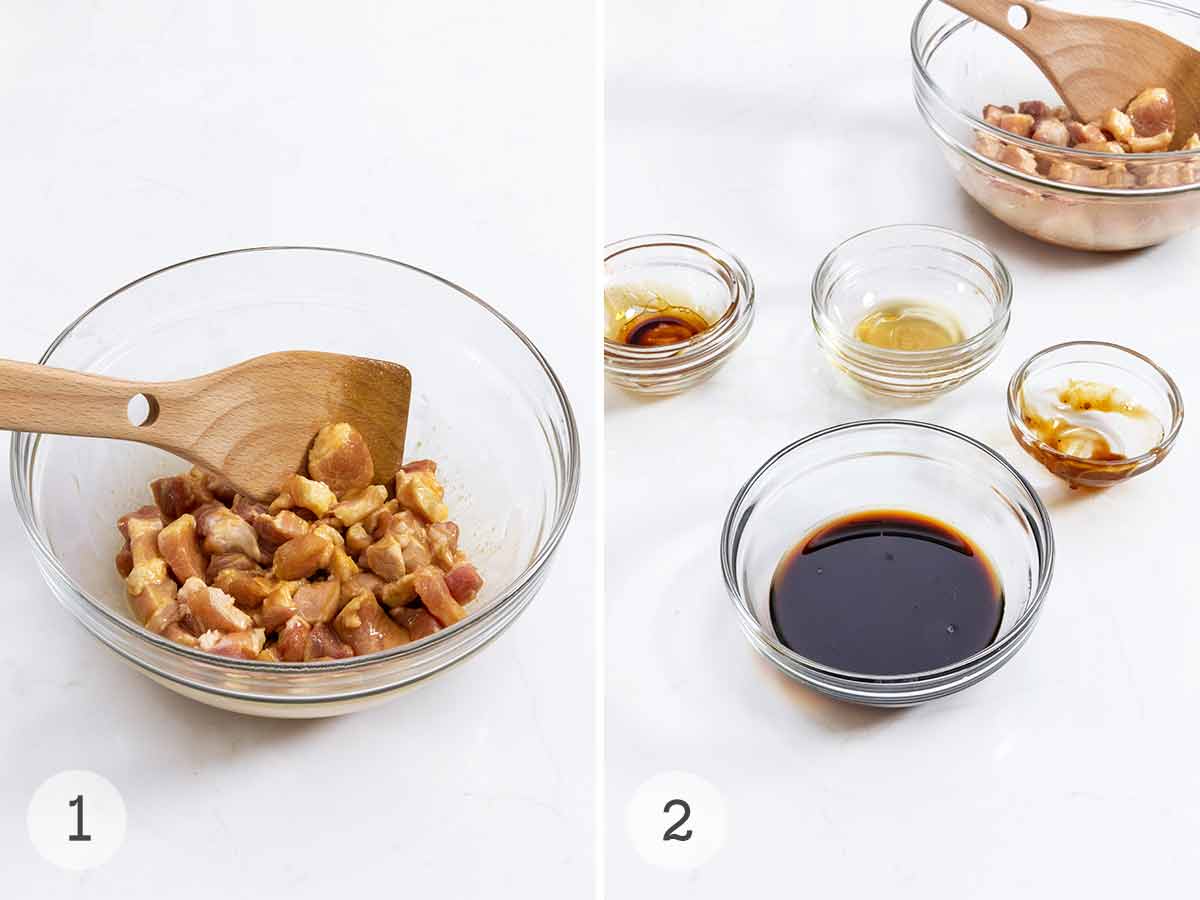
- Coat the pork. Mix 1 tablespoon of light soy sauce with the cornstarch, Shaoxing wine, and sugar in a large bowl. Add the pork belly and mix until the pork is thoroughly coated.
- Make the sauce. Mix 1 tablespoon of light soy sauce with the dark soy sauce, hoisin, chicken stock, and sesame oil in a small bowl.
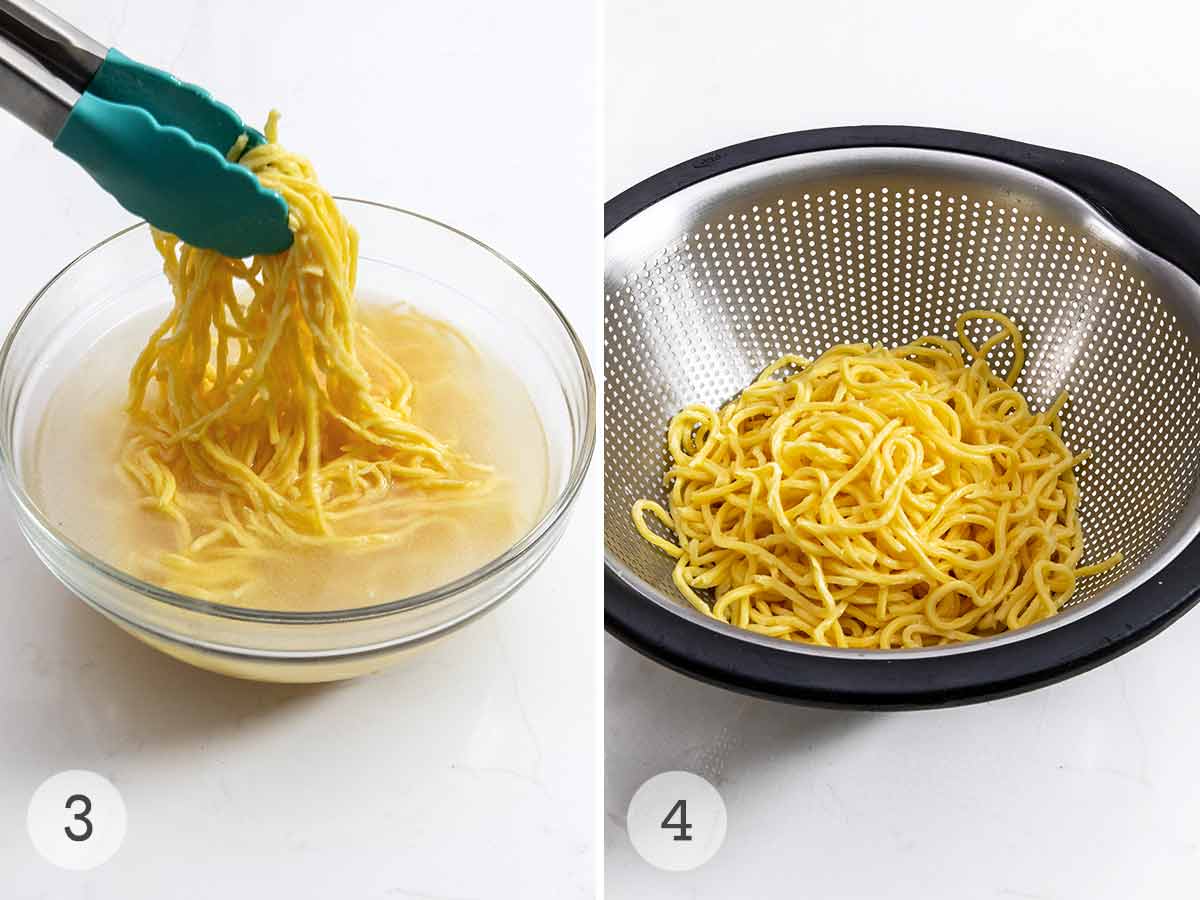
- Soak the noodles. Fill a large bowl with hot water and add the noodles. Soak until warmed through.
- Drain the noodles.
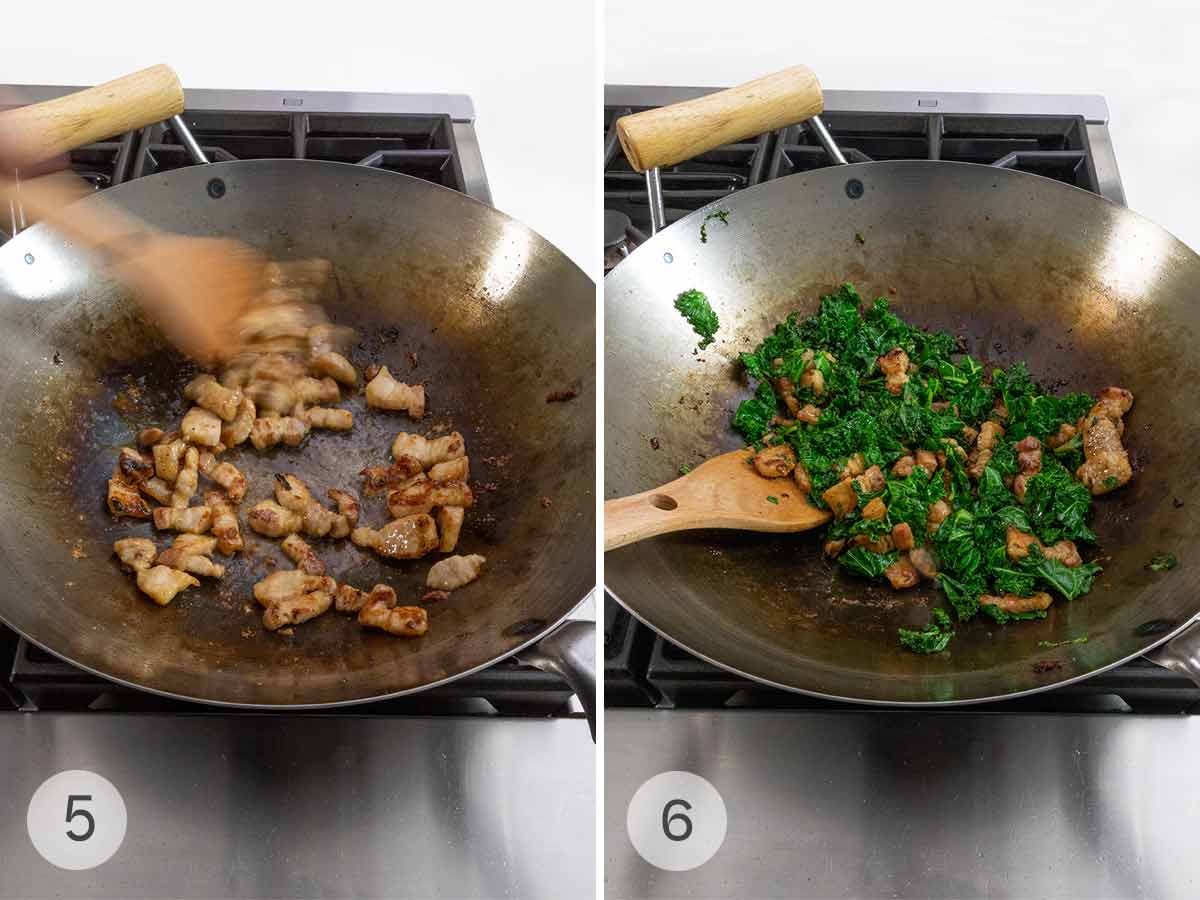
- Cook the pork. Heat a wok or skillet until smoking, then swirl in the oil. Add the pork and cook until golden and crispy.
- Stir in the kale and cook just until it begins to wilt.
Want to Save This?
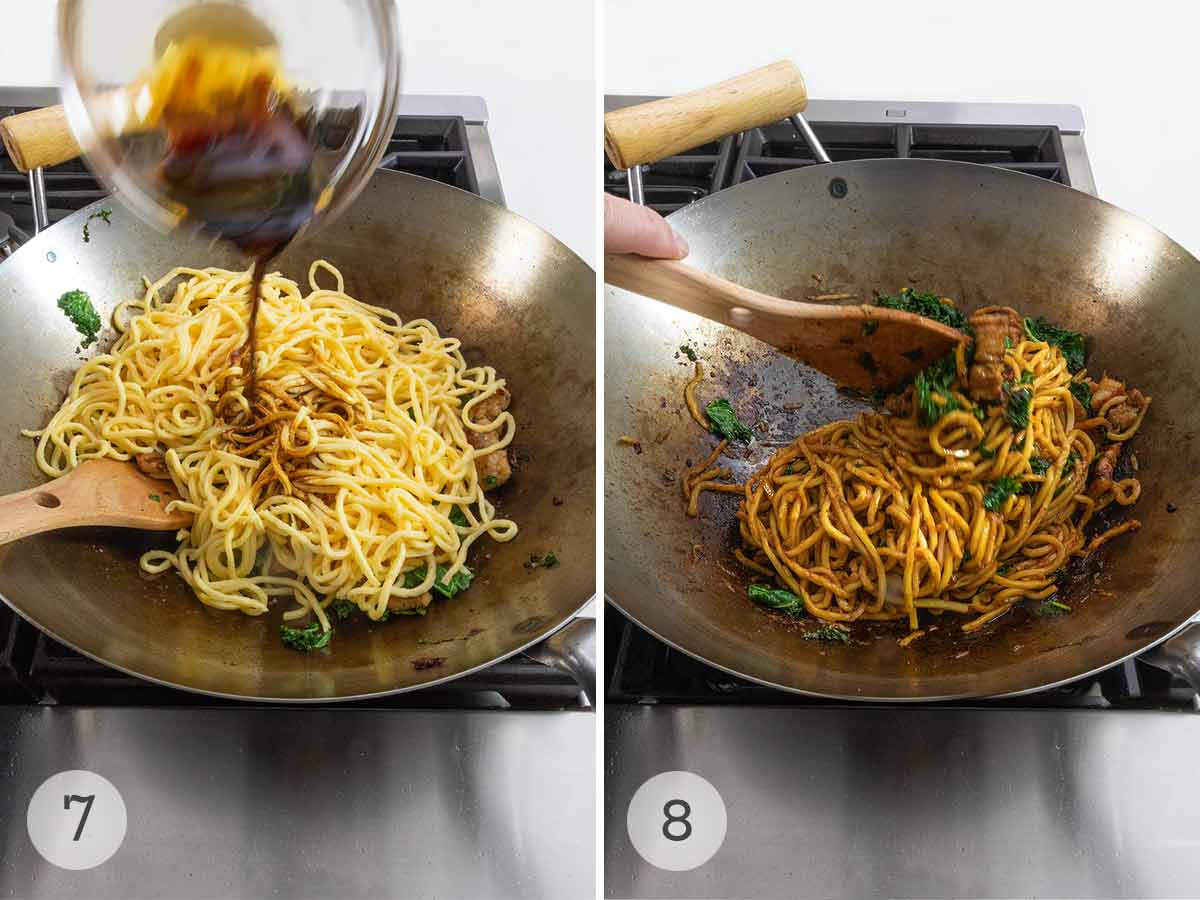
- Toss in the noodles and sauce and fry over high heat.
- Cook, stirring and tossing constantly until everything is slightly charred.
- Serve. Top with scallions, fried onions, and chile oil, if desired.
Common Questions
These popular Asian noodles are made from wheat and are a little thicker than spaghetti, with a slightly chewy texture. They are typically stir-fried with vegetables, meat, poultry, or shrimp, and an Asian-style sauce.
Soy sauce, light or dark, is made from fermented soybean and wheat, water, salt, and some type of a fermenting agent such as yeast or mold.
Light soy sauce is thinner and saltier than dark soy sauce, while dark soy sauce is sweeter, thicker, and has a stronger flavor. Dark soy sauce will give these noodles their dark color.
The two sauces are significantly different and shouldn’t be substituted for each other.
If you can’t find light soy sauce, use regular soy sauce in its place. But don’t confuse low-sodium sauce with light soy sauce. They’re entirely different.
Absolutely. This Shanghai noodle recipe offers a basic version of fried noodles, but feel free to swap in shrimp or chicken or try an Asian vegetable, like Chinese broccoli, in place of the kale.
Pro Tips & Troubleshooting
- This recipe makes a noodle dish that’s lightly coated with sauce. If you prefer saucier noodles, double the sauce.
- If your noodles are clumping or sticking together after soaking, give them a quick rinse with cold water before setting them aside.
- Leftover noodles can be stored in a sealed container for up to 3 days. To reheat, warm in a skillet over medium heat until warmed through, adding water or chicken broth as needed to loosen the noodles.
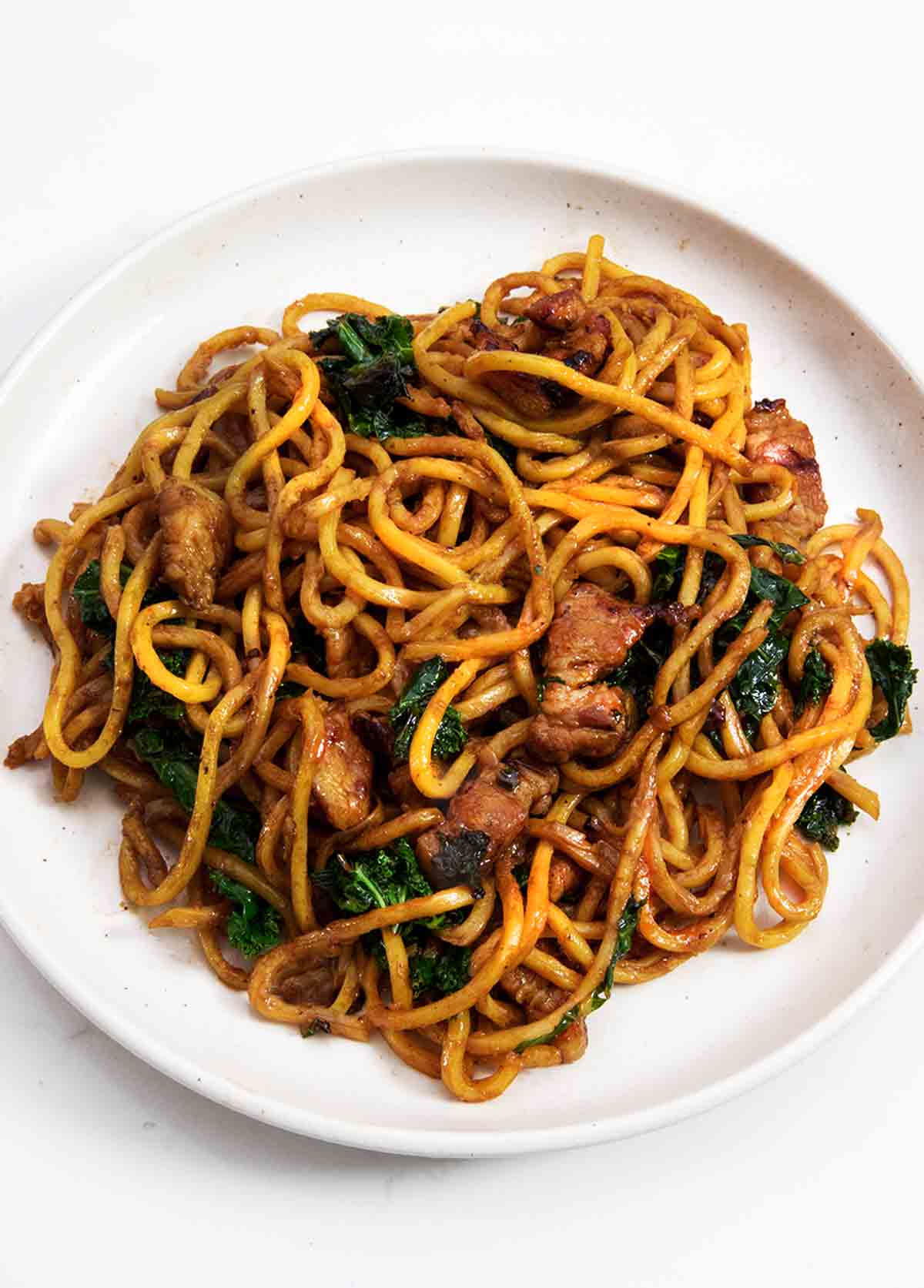
Write a Review
If you make this recipe, or any dish on LC, consider leaving a review, a star rating, and your best photo in the comments below. I love hearing from you.–David
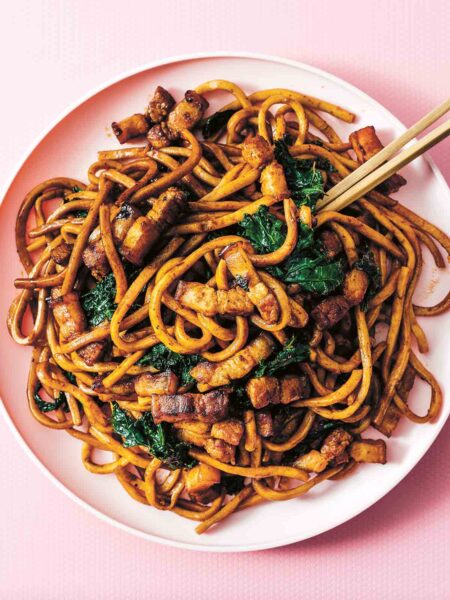
Shanghai Fried Noodles
Ingredients
- 2 tablespoons light soy sauce
- 2 teaspoons corn starch
- 1 teaspoon Shaoxing wine
- 1 teaspoon granulated sugar
- 1/2 pound pork belly, sliced into matchsticks
- 1 tablespoon dark soy sauce
- 1 tablespoon hoisin sauce
- 2 tablespoons homemade chicken stock or low-sodium canned chicken broth
- 2 teaspoons toasted sesame oil
- 1 pound fresh Shanghai thick noodles or frozen udon
- 1 tablespoon neutral oil
- 1 small bunch (7 oz) kale, stemmed and chopped
- Sliced scallions, for topping (optional)
- Crispy fried onions, for topping (optional)
- Chile oil, for topping (optional)
Instructions
- In a large bowl, combine 1 tablespoon of the light soy sauce with the cornstarch, Shaoxing wine, and sugar. Add the pork and mix until the pork is thoroughly coated.
- In a small bowl, combine the remaining 1 tablespoon light soy sauce with the dark soy sauce, hoisin sauce, chicken stock, and sesame oil.
- Fill a large bowl with hot tap water and add the noodles. Let soak until loosened and warmed through, 30 seconds to 1 minute. Drain and set aside. (If using frozen udon, soak them until defrosted, 2 to 3 minutes.)
- Heat a large wok or skillet over medium heat. When the wok starts to smoke, add the oil and swirl until shimmery. Add the pork with its marinade and cook, stirring occasionally, until it is golden brown and crispy, 3 to 5 minutes.
- Add the kale and toss to combine. When the kale has wilted slightly, add the noodles and the sauce. Crank the heat to high and toss to combine. Sear until everything is smoky and slightly charred, about 2 minutes.
- Serve hot with sliced scallions, crispy fried onions, and/or chili oil, if desired.
Notes
- Double the sauce–This recipe makes a noodle dish that’s lightly coated with sauce. If you prefer saucier noodles, double the sauce.
- Sticky noodles–If your noodles are clumping or sticking together after soaking, give them a quick rinse with cold water before setting them aside.
- Storage and reheating–Leftover noodles can be stored in a sealed container for up to 3 days. To reheat, warm in a skillet over medium heat until warmed through, adding water or chicken broth as needed to loosen the noodles.
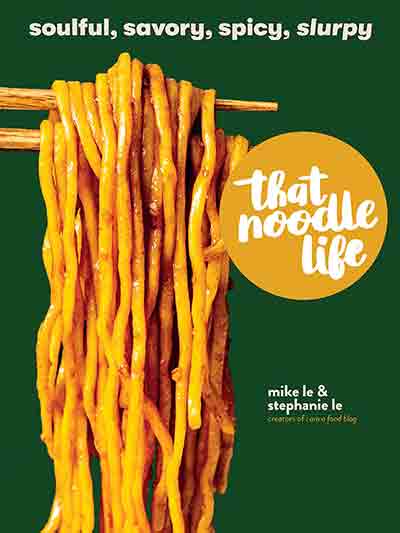
Explore More with AI
Nutrition
Nutrition information is automatically calculated, so should only be used as an approximation.
Recipe Testers’ Reviews
This is a quick and very versatile Asian noodle dish, and I was already thinking of different variations of protein and greens. The pork belly provides a luscious texture, but I could see using some leaner proteins like chicken or flank steak.
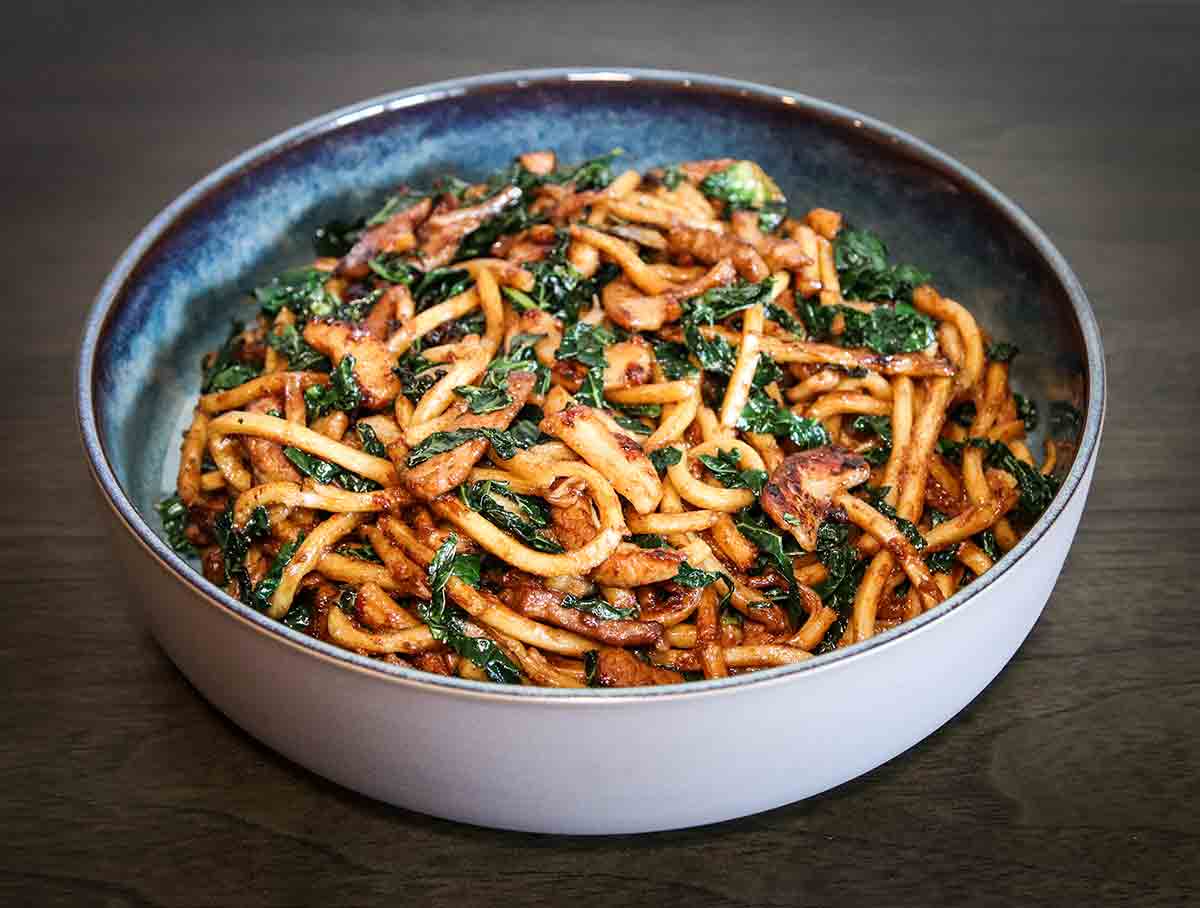
In place of the kale, I would use Chinese broccoli (gai lan), which works well in stir-fry dishes and has a similar texture to broccolini. The gai lan may also have a few flowering bulbs that are edible and would look great on the finished dish. Select a bunch without too many, as the flowering happens with more mature gai lan.
The velveting technique with the Shaoxing wine and cornstarch keeps the protein moist, tender, and creates that take-out flavor and texture. Japanese soy sauce is typically thinner and is made from both soy and wheat and goes well with sushi, but for stir-fry, Chinese soy sauce is supreme.
You can make this Shanghai noodle stir-fry faster than you can order takeout–no joke! It was delicious and so easy. It is not a saucy stir-fry–it’s on the drier side–which I liked, but if you prefer slurpier noodles, double the sauce.
I served mine with chopped scallions and chili oil. There were no leftovers!
This was delicious! I seldom make Asian cuisine at home, mostly because I hadn’t invested in the base ingredients until recently, so I loved trying this to gain practice with the technique.
This is an excellent recipe to try if you haven’t made these dishes often and are interested in expanding your repertoire. The perfect introduction to stir-frying, and for those that are familiar with this technique and ingredients, it’s a super quick, delicious meal.
We enjoyed this easy noodle stir-fry as a weeknight meal. It came together quickly with just a few ingredients.
I used refrigerated Udon noodles, which I allowed to come to room temperature before adding hot water. I let them sit for about 3 minutes before loosening them up to avoid breaking them. I thought I would miss the ginger and garlic flavors of a typical stir-fry, but the hoisin sauce and sesame oil provided plenty of flavor.
I used baby kale instead of mature kale leaves because it eliminates of the step of stripping the leaves from the veins of the kale.
Who doesn’t love a bowl of squishy, saucy, chewy noodles? With the noodles, crispy bites of pork belly, and slightly sweet and savory sauce, this dish has a lot going for it.
I also love that this recipe can be made exactly as written, with pork belly and kale, or endlessly adapted to whatever protein or vegetable I have on hand. This dish, and its variations, could definitely become a staple at my house.
I had some trouble with the Shanghai noodles sticking together and clumping, so next time I’ll either pull them right from the hot water and into the wok, or give them a quick rinse with cold water before setting them aside. I also didn’t get as much charring/browning on the noodles as I’d like, so I’ll try adding a bit of sugar to the sauce to get a little extra caramelization.
